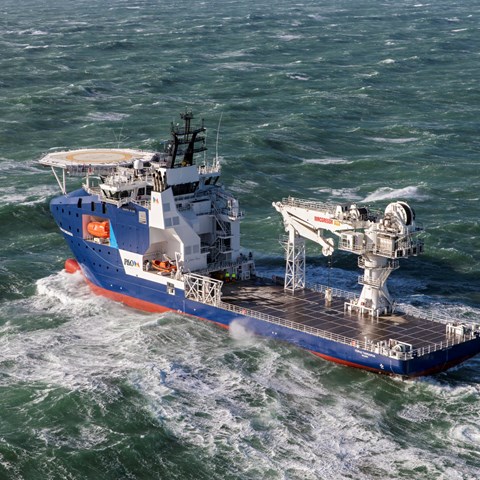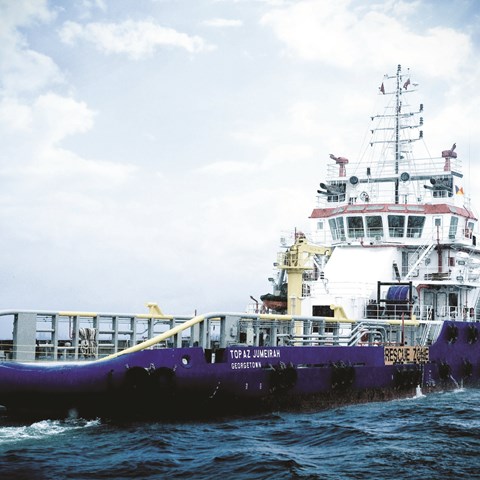The Uber of Offshore logistics: why pay more?
Oil and gas companies around the world are losing money due to inefficiencies in their offshore supply chains. From wasteful use of space on vessels and fixed rental for shore base operations to superfluous add-on costs in procurement processes, these problems are unnecessarily inflating production costs and hindering respective efficiency.
At P&O Maritime Logistics, we are working on a suite of innovative solutions to challenge the status quo of oil and gas logistics, and with it are aiming to support International Oil Companies (IOCs) to improve best in class supply chain practices. We’re building a cheaper, cleaner and more flexible offshore material cycle. Here’s how.
It’s not about ships, it’s all about the cargo
IOCs lay out the traditional procurement practice of separating inbound logistics, shore base, and vessel operations, which generates multiple third-party interfaces requiring extensive management mechanisms to achieve operational excellence.
Material procurement remains largely the responsibility of the business owner, who is typically focused on their drilling or production environment. This means their exposure to other business units is limited, and opportunities to consolidate cargo and less costly ways of moving cargo are often missed.
Whilst the bulk of profits for oil and gas companies will always come from operations and production, the last oil crisis exposed the real importance of cost savings, such as asset sharing for example. P&O Maritime Logistics’ response is to work in partnership with those business owners and help them to cut costs on vessel utilisation and freight cycle management.
The vessel is an important part of our clients’ offshore supply chain, but it is only one part amongst others that requires integration into the overall cargo flow. The critical part is the freight in cycle visibility which includes the important last-mile delivery.


By aligning vessel and shore base operations, cargo can overcome bottlenecks.
Moving up the supply chain
P&O Maritime Logistics has realised that commoditised business will gradually phase out.
The dependencies of a stagnant business model that does nothing else but providing an asset, and not a service, won’t be sustainable in an emerging tech environment. Nonetheless, facilities and assets will remain “enablers” and are a critical part of a sophisticated offshore logistics supply chain.
Shore base operations - the strategic facility - to serve a client’s challenging remote location is another area of interest for P&O Maritime Logistics. While service providers for inbound logistics (third-party logistics providers and freight forwarders) and vessel operators can easily be replaced and are highly competitive, the shore base operator is different.
In a high-value location close to the offshore fields, they play a key role in an integrated service solution. Here, the cargo can overcome bottlenecks and unnecessary overflow leading to production and operations shortages if not properly managed as part of an end-to-end solution.
P&O Maritime Logistics will gradually extend its service portfolio and grow in this market segment. With this growth, we’ll ensure that the combined service portfolio for Offshore Logistics is not only grounded around the vessel management but has an equal counterweight in supply base operations.
End-to-End: the future of offshore supply chains
As more and more technology-enabled solutions come to market, simply providing a vessel to an oil or gas company will not be a sustainable service over the next decade. Instead, we’re championing an industry-wide effort to connect our services.
By aligning vessel and shore base operations, cargo can overcome bottlenecks and we can manage unnecessary overflow, saving customers time and money lost to production and operations shortages. This is the start of a truly end-to-end solution and is where P&O Maritime Logistics intend to extend our service portfolio.
We aim to provide planning security for all client stakeholders in procurement, drilling, operations, and production.
With a sophisticated IT system and booking platform in place, our next step is to partner with an international freight forwarder to cover the entire cargo life cycle. It also represents an opportunity to aggregate data across the supply chain from requisitioning to delivery at an offshore location, giving the customer more visibility and predictability when making business decisions.
The offshore industry is embarking on a true revolution: creating Uber-style transport solutions that are connected and conscious of saving time and money. Why pay for the entire car when you can just pay for your trip? The savings are as enormous as the opportunities.
Energy Connects includes information by a variety of sources, such as contributing experts, external journalists and comments from attendees of our events, which may contain personal opinion of others. All opinions expressed are solely the views of the author(s) and do not necessarily reflect the opinions of Energy Connects, dmg events, its parent company DMGT or any affiliates of the same.
KEEPING THE ENERGY INDUSTRY CONNECTED
Subscribe to our newsletter and get the best of Energy Connects directly to your inbox each week.
By subscribing, you agree to the processing of your personal data by dmg events as described in the Privacy Policy.
















